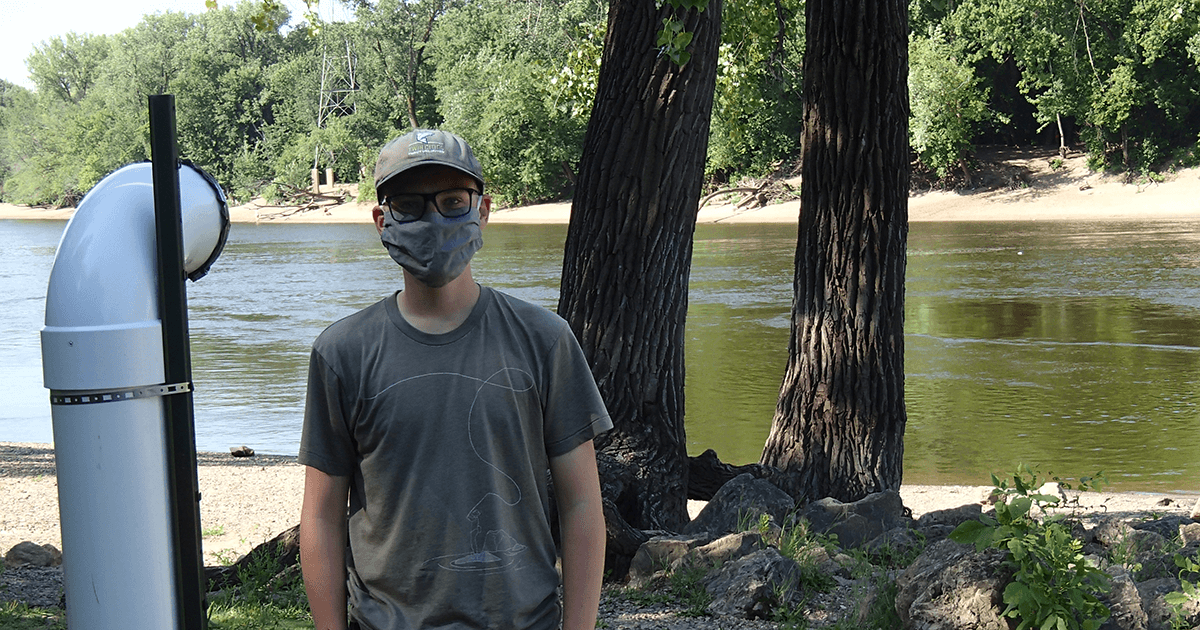Tackling the issue of fishing line for wildlife
We've written a lot about how anglers can help our waters and wildlife by avoiding lead tackle. But another key action is disposing of fishing line responsibly.
Jonathan Wilson-Thieroff, a Youth Empowerment Program (now the Environmental Stewardship Institute) participant this summer, has enjoyed fishing since he was 5 years old. He often casts a line at Hidden Falls Park in St. Paul, as do many others, because it's a peaceful place to enjoy the river in the metro area.
But he's also noticed a lot of fishing line, hooks and bobbers get left behind to wash into the river and potentially injure wildlife.
A new receptacle at Hidden Falls Park
For his final project in our summer program, Jonathan built and installed a PVC fishing line receptacle at Hidden Falls Park. He got the idea for the receptacle while visiting his grandparents in Florida. He hadn't seen one like that in Minnesota yet, but thought it was a great way to keep this dangerous litter out of the river.
Maybe it's the first in our area, but we hope it's not the only one for long.
As Jonathan noted in an accompanying flyer he created, "Every year, thousands of animals are killed by discarded fishing line. When improperly disposed of, fishing line entangles anything that it can wrap around. Even fishing line put in the trash can be hazardous when birds pick it out as nesting material and entangle themselves or redistribute it into the environment."
So now Hidden Falls anglers can easily get rid of their used fishing line. But what if there's no handy disposal receptacle nearby?
Jonathan's guide to dealing with fishing line
-
Don't leave any fishing line on the ground; pack it (and other people's line) out with you in a secure container.
-
When throwing line away, cut it into 6-12 inch lengths to prevent animals from entangling themselves in case the line falls out of its container.
-
If possible, use a fishing line specific receptacle to properly dispose of fishing line. This prevents the line from blowing away and birds from using it as nest material.
Download the flyer Jonathan made and handed out when he installed the receptacle this summer.
* * * * *
What's the Youth Empowerment Program?
FMR created the Youth Empowerment Program (now the Environmental Stewardship Institute) to address the gap between environmental education and a career path in the environmental field.
While many high schools offer green teams or eco clubs, young people often don't have many chances to explore what a real career in the environmental field would look like. As an environmental organization, we wanted to use our resources to help address that gap, in turn growing a stronger, more equitable movement.
We provide paid job experience and foundational learning to a group of students curious about environmental career paths. Our hope is that, by completing the program, participants are more prepared for continued schooling in environmental subjects and have real work experience to lean on for future job opportunities in the field.
